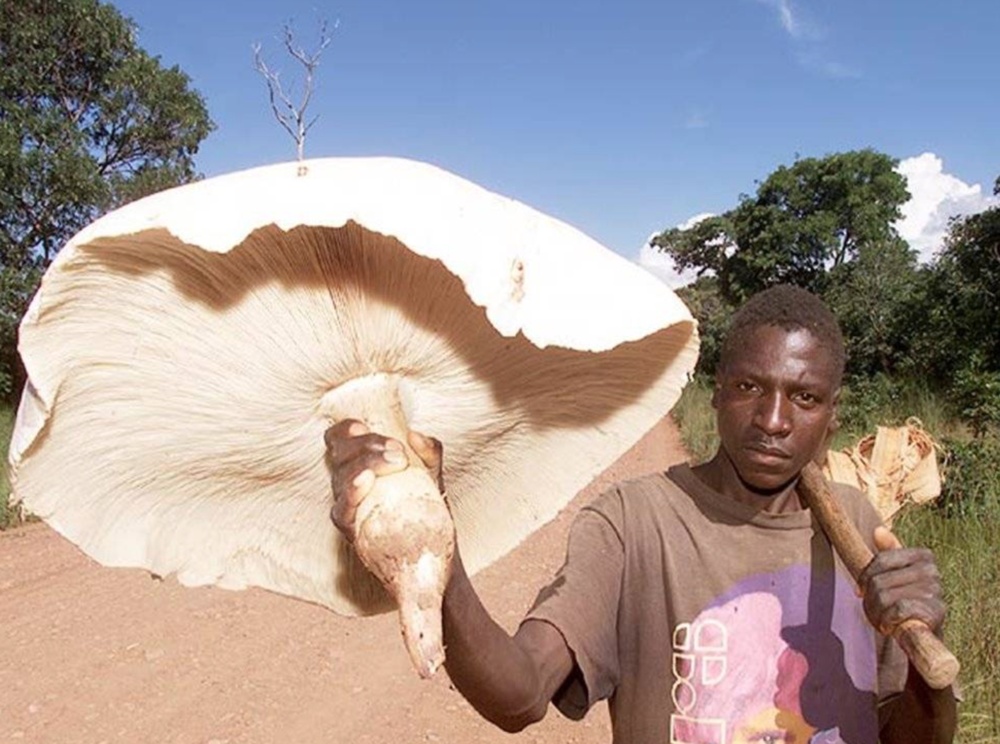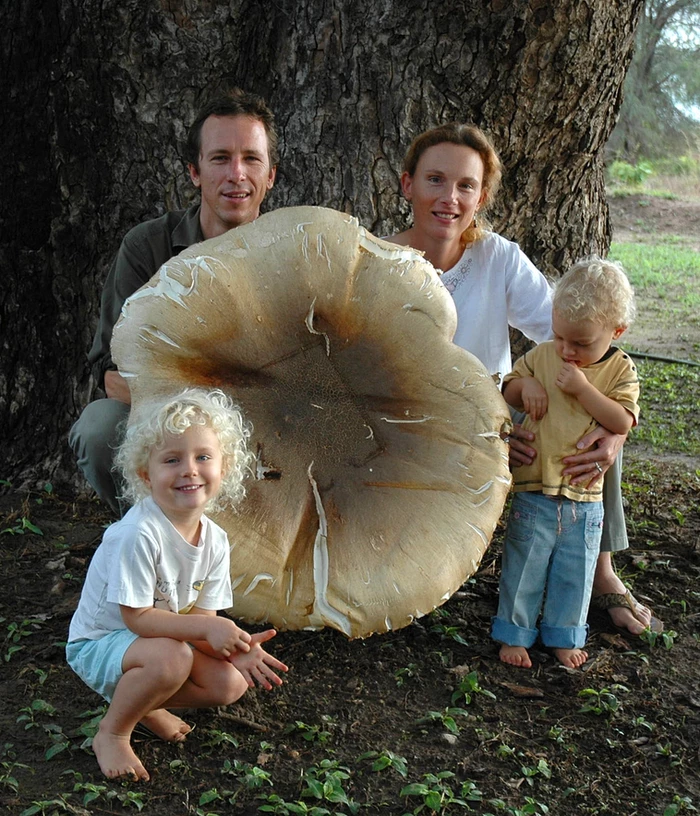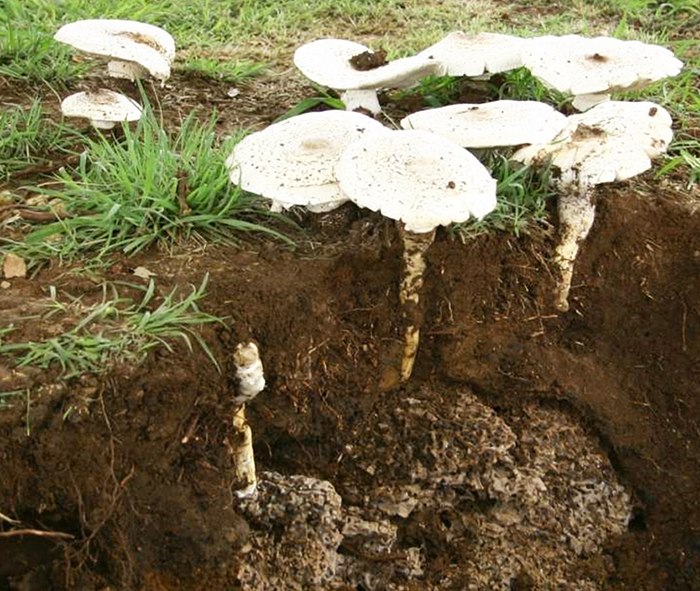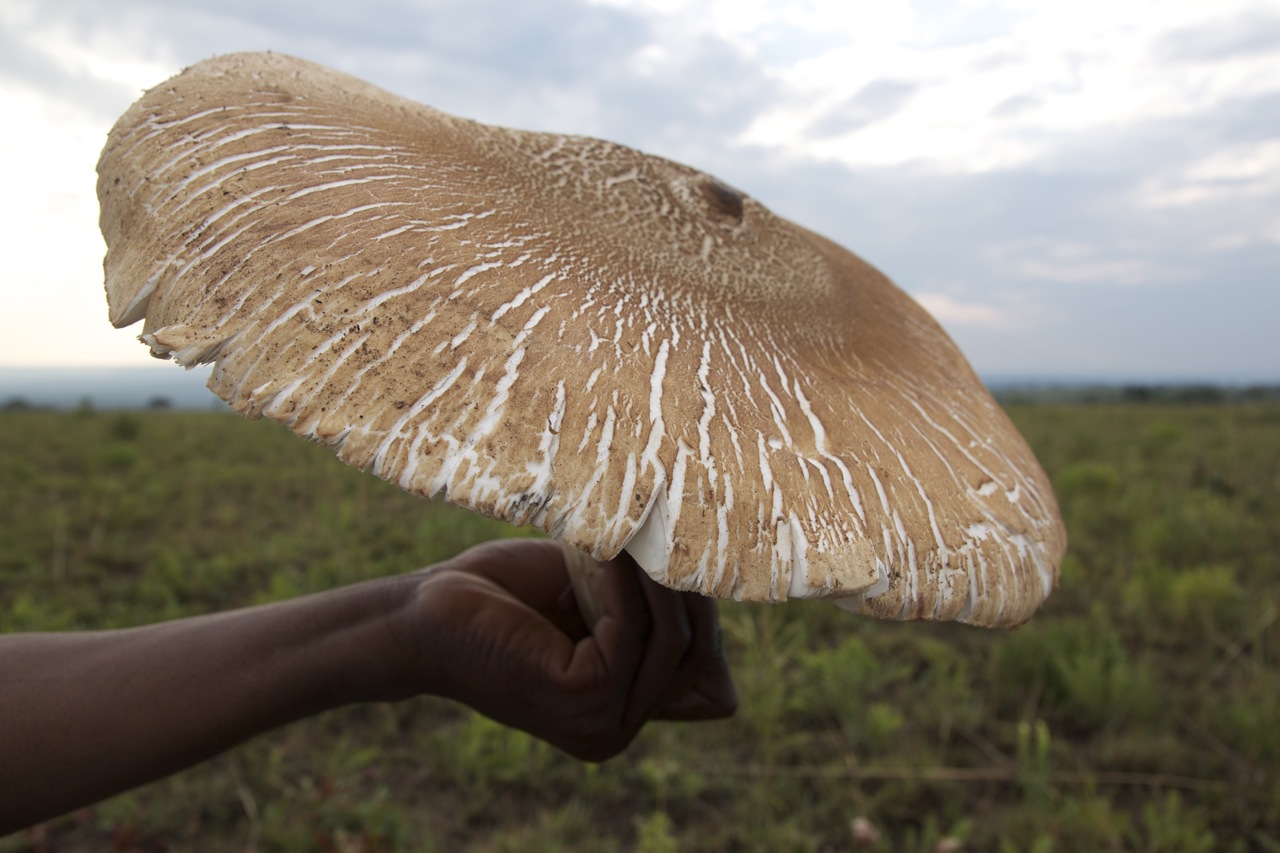Most edible mushrooms are relatively small, but in West Africa and Zambia, there is one exceptionally enormous species that surpasses them all: Termitomyces titanicus. The name seems fitting for such a colossal species.
In Zambia, where mushroom gathering holds great significance, Termitomyces titanicus is highly revered. While the largest fungus (and organism) in the world belongs to the genus Armillaria, currently consuming 1,000 hectares in Oregon, Termitomyces titanicus claims the title of the world’s largest edible mushroom, with a cap that can measure a little over three feet (one meter) across.

Interestingly, this gigantic mushroom species remained unknown to Western science until 1980, despite its size and its presence as a common item in local markets.

The name Termitomyces reflects the fact that these mushrooms grow inside termite mounds. They have a symbiotic relationship with termites and thrive on their fecal matter, breaking down plant material as a food source. Additionally, the decayed mushroom tissue becomes another food source for the termites.

In return, the fungi associated with termites receive a continuous supply of plant material within a controlled environment that offers optimal temperature and moisture content for their growth.
But why does the mushroom grow to such a colossal size? Well, for one, it acquires a substantial amount of resources from its insect mutualist, as termite colonies can reach densities in the millions, with countless individuals foraging for organic matter to sustain them. However, its size is not solely due to the abundance of energy it obtains. This horizontally transferred fungus must spread enough spores to be discovered by suitable termite species. In ecosystems with low mushroom production, the distribution of termite mounds may be quite patchy. To ensure a higher chance of finding a suitable substrate, the fungus has evolved to produce one of, if not the largest mushrooms on the planet. The larger the mushroom, the more spores it produces, increasing the likelihood of being found by initial termite foragers.

Termitomyces titanicus grows during the rainy season, which is the prime time for mushrooms in its habitat. It boasts a meaty texture and a savory, smoky taste that is considered particularly delicious. A single cap of this mushroom can provide a satisfying meal for an entire family.